Welcome to New Jersey, home to some of the most beautiful and diverse species of birds in the country. One of the most iconic of these species is the blue bird, a vibrant little songbird that can be found in many parts of the Garden State.
Blue birds are a delight to observe and can provide hours of entertainment for bird watchers across the state.
This guide will provide you with an overview of the blue bird population in New Jersey, including where to find them, what to look for, and how to attract them to your backyard.
1. Eastern Bluebird
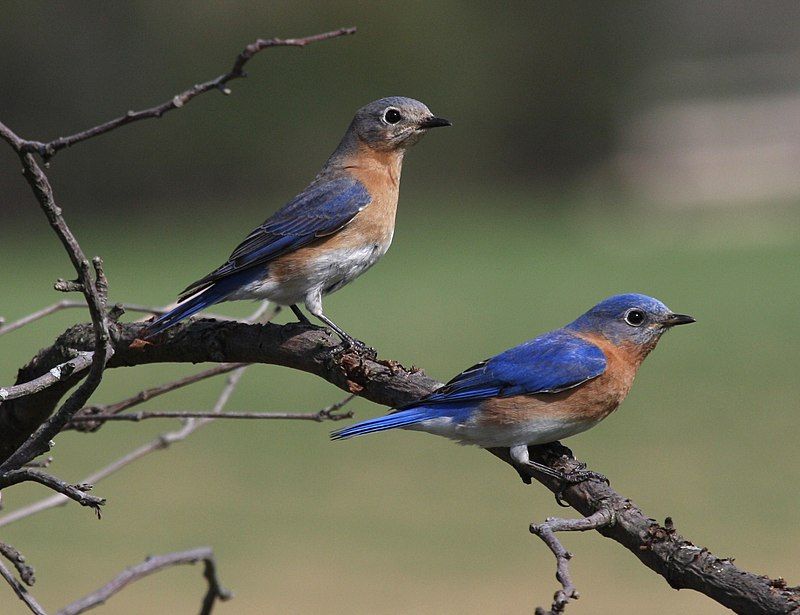
The eastern bluebird is a vibrant species of thrush native to North America. It can be found in a variety of habitats, including open woodlands, farmlands, and orchards.
During the breeding season, the male eastern bluebird has a bright blue plumage that stands out and can be easily observed on a wire or open perch. This makes it a popular bird among birdwatchers, as its vivid coloration gives them a chance to appreciate its beauty.
The eastern bluebird is also a migratory bird, meaning it travels to different areas throughout the year. This allows birders to admire the species in different parts of the continent.
| Kingdom | Animalia |
| Phylum | Chordata |
| Class | Aves |
| Order | Passeriformes |
| Family | Turdidae |
| Genus | Sialia |
| Species | S. Sialis |
2. Blue Jay
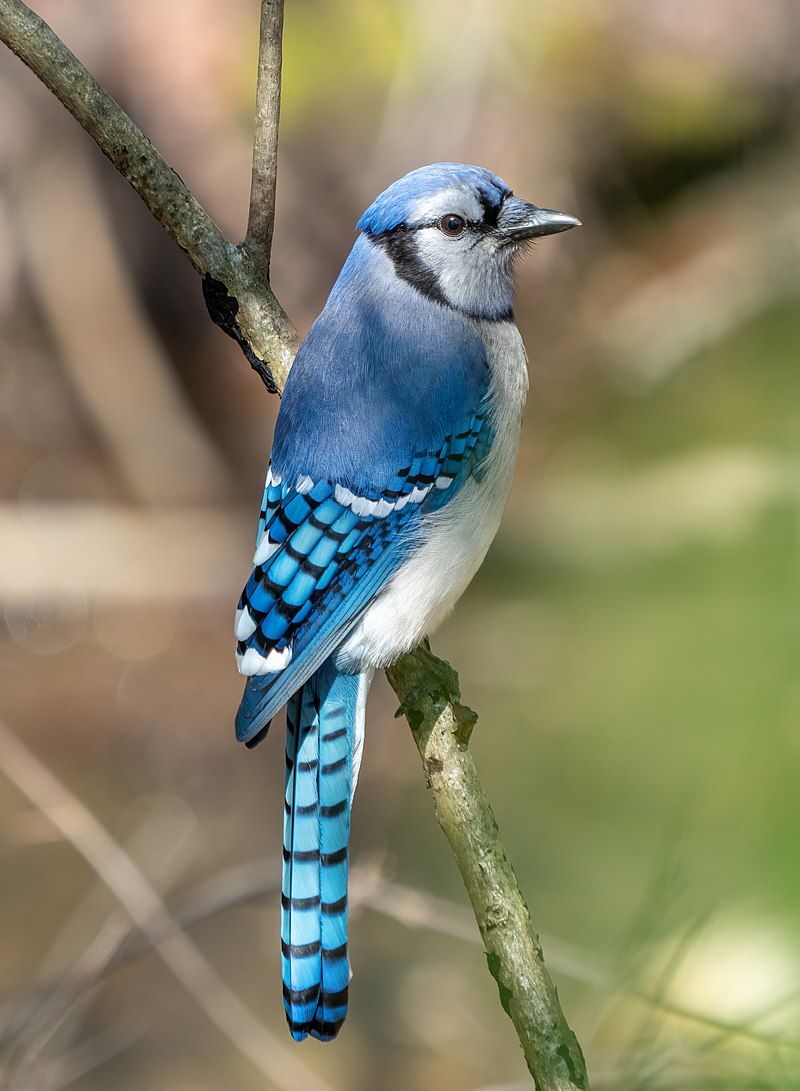
The blue jay is a type of bird belonging to the Corvidae family, which is native to the eastern part of North America, from the eastern and central regions of the United States down to Newfoundland in Canada.
These birds are considered to be both migratory and resident populations, depending on the location. For example, some populations of blue jays in the east may migrate when the seasons change, while those in Newfoundland stay in the same area all year round.
Across southern Canada, there are also breeding populations of blue jays, which means that they are able to reproduce in the area.
| Kingdom | Animalia |
| Phylum | Chordata |
| Class | Aves |
| Order | Passeriformes |
| Family | Corvidae |
| Genus | Cyanocitta |
| Species | C. cristata |
3. Indigo Bunting
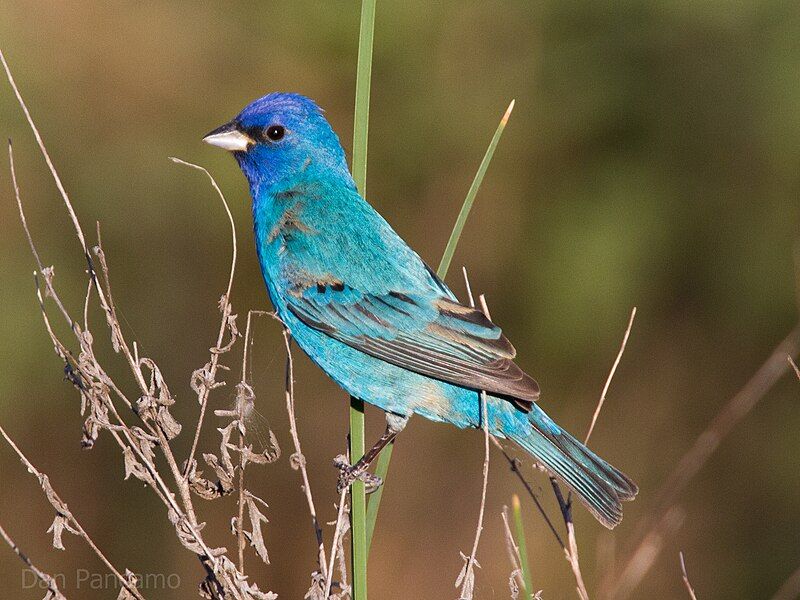
The indigo bunting is a small bird in the cardinal family, Cardinalidae. It is a migratory species, meaning it travels across large distances during different parts of the year.
During the summer months, the indigo bunting can be found breeding in southern Canada and northern Florida. When winter comes, they migrate south, all the way down to northern South America.
These birds do not migrate during the day time, instead, they fly at night and use the stars to help them find their way. This incredible sense of navigation helps the indigo bunting to travel long distances in search of food and warmer temperatures.
| Kingdom | Animalia |
| Phylum | Chordata |
| Class | Aves |
| Order | Passeriformes |
| Family | Cardinalidae |
| Genus | Passerina |
| Species | P. cyanea |
4. Barn Swallow
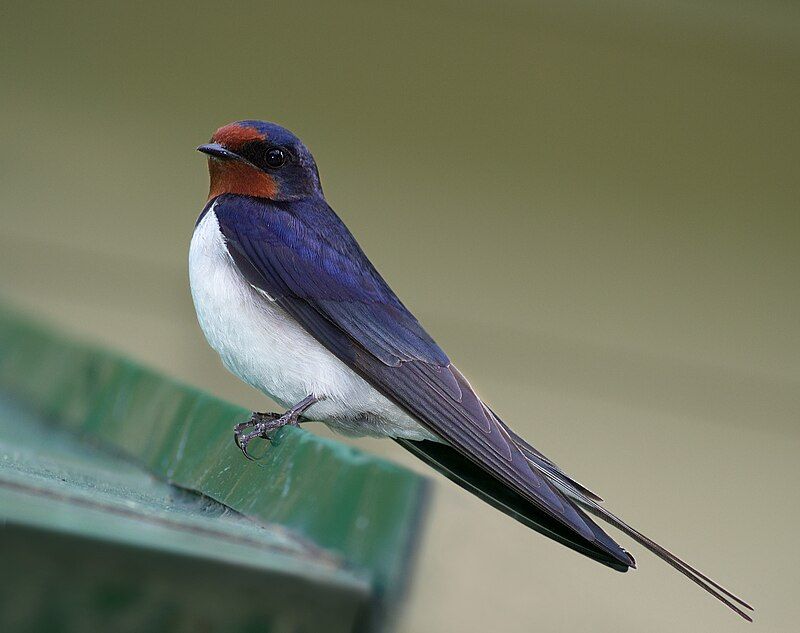
The barn swallow is a species of swallow found across the world. It is a passerine bird, meaning it is a bird that is part of the perching bird family.
This species has a large natural distribution, meaning it can be found in an area of 251 million square kilometers, which is an incredibly large area. It is also easy to identify due to its distinctive features, which include blue upperparts and a long, deeply forked tail.
This makes it a recognizable bird for birdwatchers and ornithologists alike. The barn swallow is the most widely distributed species of swallow in the world, making it an important species to study and observe.
| Kingdom | Animalia |
| Phylum | Chordata |
| Class | Aves |
| Order | Passeriformes |
| Family | Hirundinidae |
| Genus | Hirundo |
| Species | H. rustica |
5. Common Starling
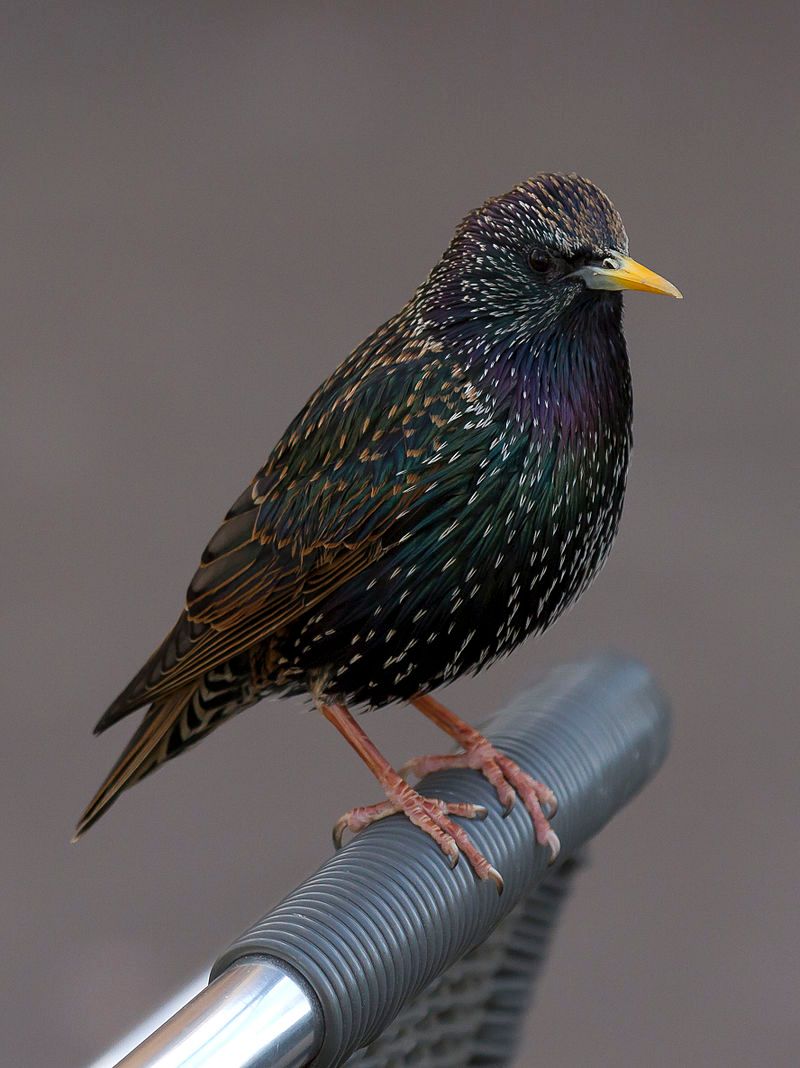
The common starling is a type of passerine bird, meaning it is a member of the order of birds called Passeriformes. It is medium-sized and belongs to the starling family, Sturnidae.
It is known by different names in different parts of the world; in North America, it is referred to as the European starling, while in Great Britain and Ireland, it is simply called the starling.
The starling is a highly adaptable species and is found in a variety of habitats, from woodlands and grasslands to urban areas. It is best recognized by its glossy black and purple plumage, with white spots on the wings.
The starling is an opportunistic feeder, and its diet consists of insects, fruits, seeds, and grains. The starling is also well known for its unique vocalizations, as it can imitate the sounds of other birds and even the human voice.
It is also a highly social species, often forming large flocks with hundreds of individuals. The starling has been widely introduced to many parts of the world and is considered an invasive species in some regions.
| Kingdom | Animalia |
| Phylum | Chordata |
| Class | Aves |
| Order | Passeriformes |
| Family | Sturnidae |
| Genus | Sturnus |
| Species | S. vulgaris |
6. White-Breasted Nuthatch
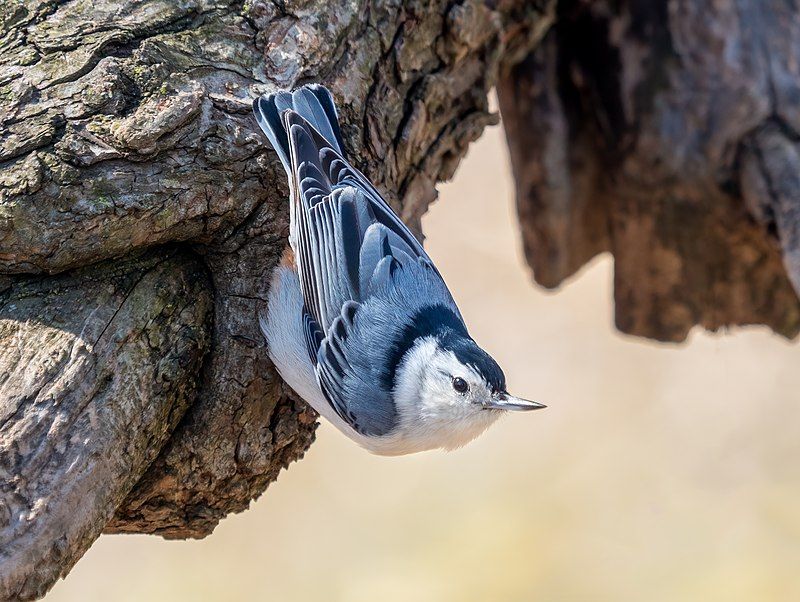
The white-breasted nuthatch is a species of bird that belongs to the Sittidae family, more commonly known as the nuthatch family. This species is medium-sized; measuring approximately 15.5 cm in length.
It is one of the most easily recognizable of the nuthatches due to its distinctive white breast and black crown. Its upperparts are grey-brown, while its underparts are pure white. The white-breasted nuthatch inhabits deciduous forests, preferring old-growth trees for nesting.
It is known to be an acrobatic climber, often seen clambering up and down tree trunks, searching for insects and larvae. This species is found across much of North America, from Alaska to western Mexico. It is also found in parts of the Caribbean, from Cuba to Puerto Rico.
The white-breasted nuthatch is an important seed disperser, helping to spread the seeds of many species of trees. It is also an important indicator species, helping to monitor the health of its habitat.
| Kingdom | Animalia |
| Phylum | Chordata |
| Class | Aves |
| Order | Passeriformes |
| Family | Sittidae |
| Genus | Sitta |
| Species | S. carolinensis |
7. Red-Breasted Nuthatch
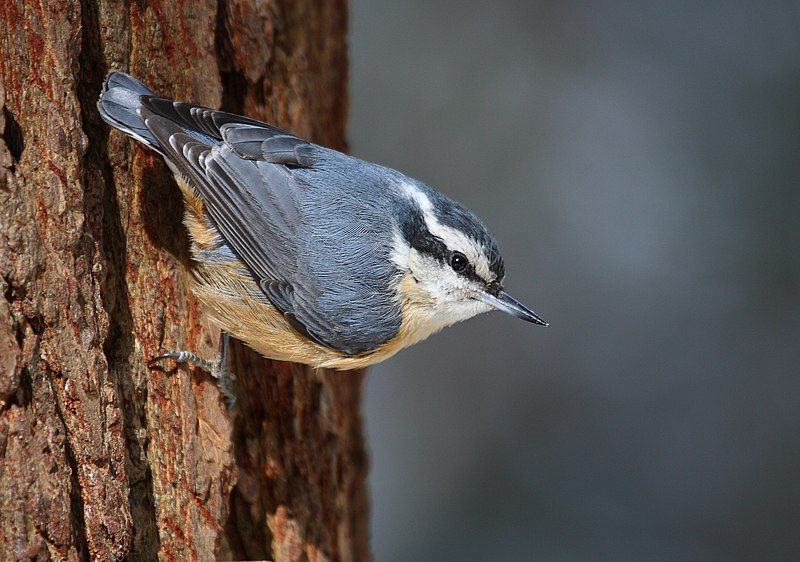
The red-breasted nuthatch is a small, brightly colored songbird. It has blue-grey upperparts, contrasting with its cinnamon-colored underparts. Its face is white with a black stripe running through its eyes, and a grey bill on top of its head.
The bird has a distinctive call that has been likened to a tin trumpet, as it is high-pitched and nasal. This call is helpful for identifying the red-breasted nuthatch in the wild.
It is a unique and cheerful sound and can be heard in the early morning and late evening during the breeding season.
| Kingdom | Animalia |
| Phylum | Chordata |
| Class | Aves |
| Order | Passeriformes |
| Family | Sittidae |
| Genus | Sitta |
| Species | S. Canadensis |
8. Common Grackle
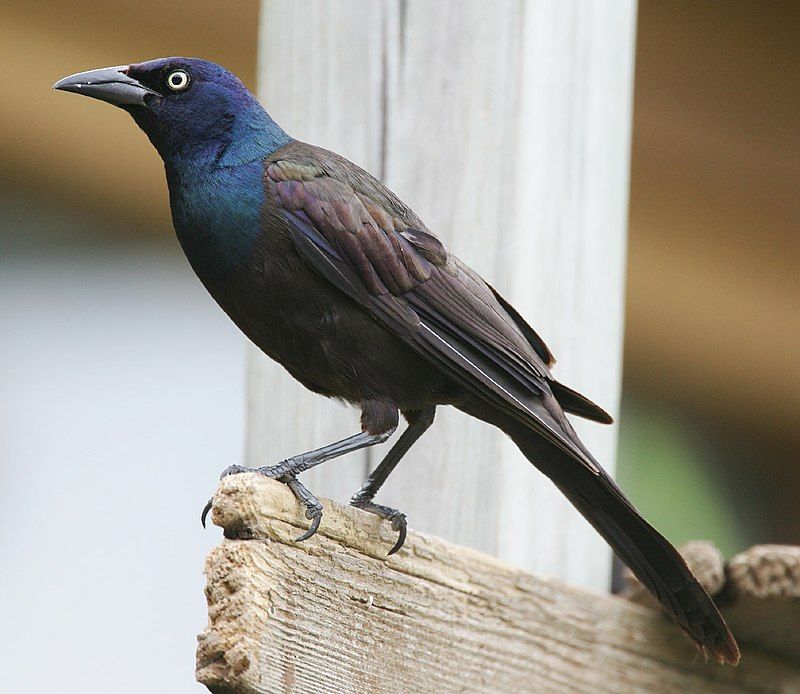
The common grackle is an icterid species of bird that is found in large numbers in North America. It was first described by Carl Linnaeus in 1758 and is divided into three different subspecies.
Adult common grackles are easily recognized by their long, dark bills, pale yellow eyes, and long tail. Common grackles are omnivorous, meaning they feed on a variety of foods, such as insects, worms, seeds, and fruits.
They are also known to scavenge, eating whatever food they can find. They are most commonly found in open woodlands, fields, wetlands, and suburban areas. Common grackles have interesting social behavior and are known to be quite vocal.
They are known to gather in large flocks and have a complex communication system. They are known to interact with other species of birds, as well as mammals and other wildlife. Common grackles are also known for their unique courtship behavior.
During the breeding season, the male will often perform a song and dance to attract a mate. Overall, the common grackle is an interesting species of bird with an array of unique characteristics.
Its wide distribution, interesting behavior, and attractive appearance make it a popular species to observe in the wild.
| Kingdom | Animalia |
| Phylum | Chordata |
| Class | Aves |
| Order | Passeriformes |
| Family | Icteridae |
| Genus | Quiscalus |
| Species | Q. quiscula |
9. Blue-Gray Gnatcatcher
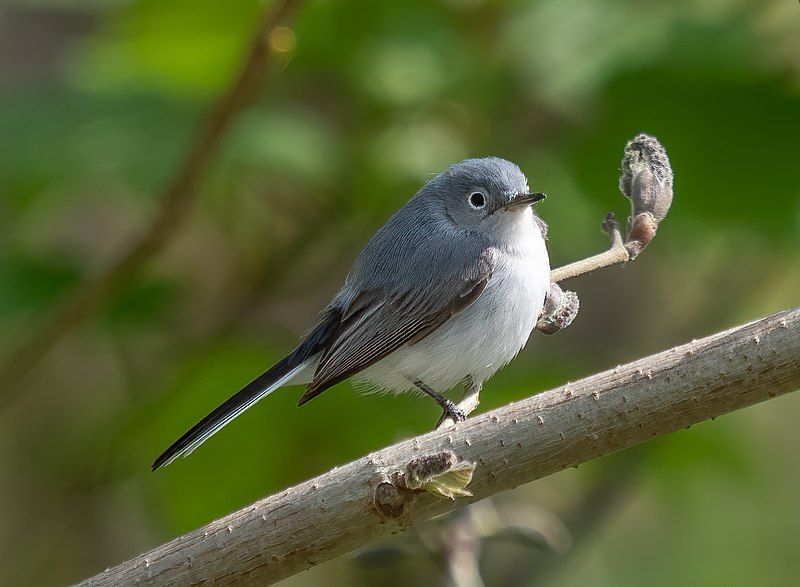
The blue-gray gnatcatcher is a small but beautiful species of songbird found in North America. It is a member of the Polioptilidae family and is characterized by its soft blue-gray plumage and distinctive white wing patches.
The bird has a long, thin bill and a white eye ring, making it easily identifiable in its natural habitats. The blue-gray gnatcatcher is usually seen in open woodlands, where it feeds on small insects and spiders.
It is a social and gregarious bird, often forming flocks and congregating in small numbers in trees or shrubs. It is also known for its loud, high-pitched call, which can be heard in the early morning and late evening.
The blue-gray gnatcatcher is an important part of North American ecosystems, helping to keep insect populations in check and providing a source of food for other species.
| Kingdom | Animalia |
| Phylum | Chordata |
| Class | Aves |
| Order | Passeriformes |
| Family | Polioptilidae |
| Genus | Polioptila |
| Species | P. caerulea |
10. Black-Throated Blue Warbler
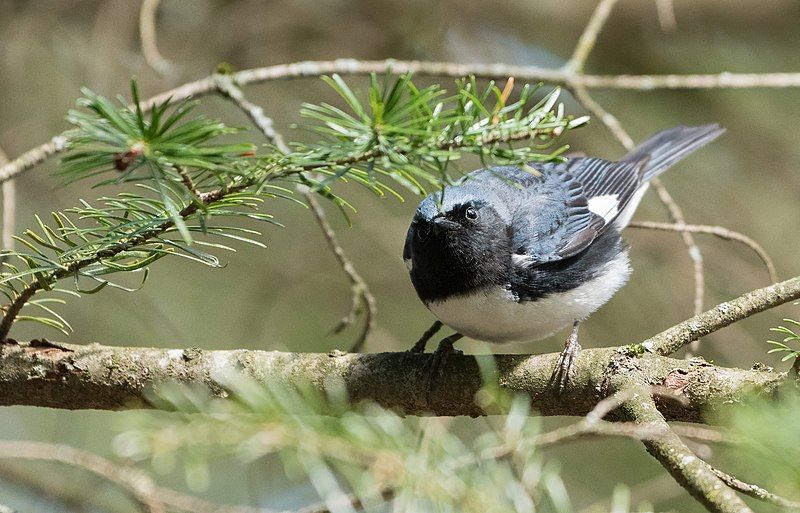
The black-throated blue warbler is a species of small bird in the New World warbler family. This species is native to eastern North America, where it breeds in deciduous and mixed coniferous forests.
During the cooler months, these birds migrate south, to islands in the Caribbean and Central America. This species is unique in its coloration, with males having a black throat, blue back, and white belly.
Females are duller in color, with a gray throat, brown back, and white belly. This species is highly dependent on mature forests for its breeding grounds and is therefore vulnerable to deforestation and other human activities.
As a result, it is considered to be a species of conservation concern.
| Kingdom | Animalia |
| Phylum | Chordata |
| Class | Aves |
| Order | Passeriformes |
| Family | Parulidae |
| Genus | Setophaga |
| Species | S. caerulescens |
11. New World Warblers
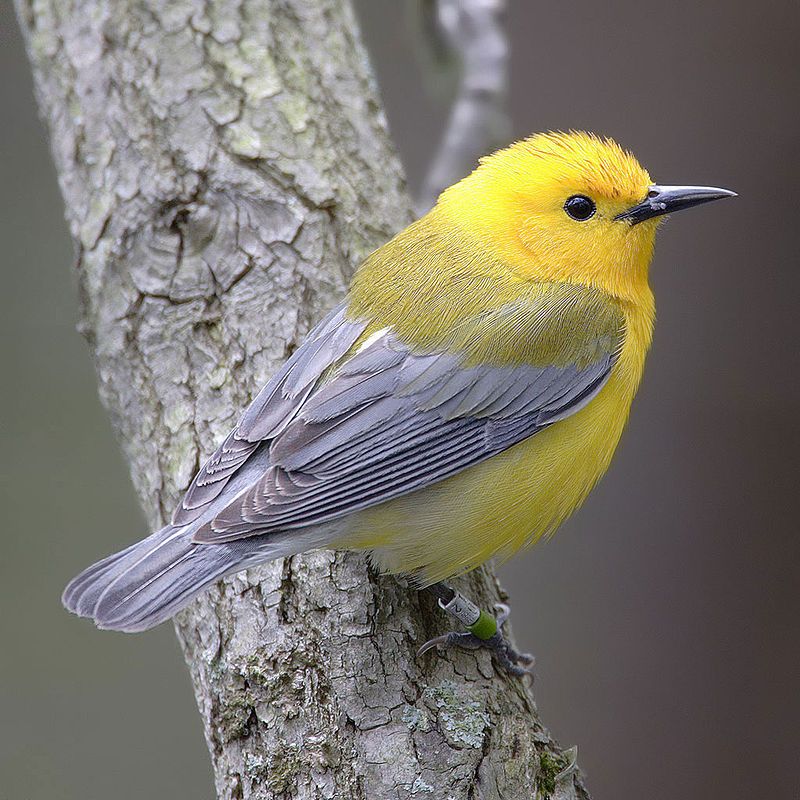
The New World warblers, also known as wood-warblers, are a family of birds that are found exclusively in the New World. They are small in size and often have brightly colored feathers. The New World warblers belong to the family Parulidae.
They are not closely related to either Old World warblers or Australian warblers, which are two separate families of birds. The New World warblers are found in a wide range of habitats and can be seen in woodlands, scrublands, and wetlands.
They are known for their melodious songs, which they use to attract mates and defend their territories. They are also highly social birds and can be seen in flocks during migration. New World warblers live on a variety of insects, spiders, and berries.
They often forage for food on the ground or in trees, depending on the species. They are also known to eat nectar from flowers and can be seen hovering in the air to reach their food source.
The New World warblers are an important part of the ecology of their habitats and play an important role in controlling insect populations. They are also important seed dispersers, helping to spread valuable plants throughout their habitats.
In conclusion, the New World warblers are an interesting and important group of birds that are only found in the New World. They are small in size and have brightly colored feathers.
They are not closely related to either Old World warblers or Australian warblers and are highly social birds that live on a variety of insects and berries. They are important for controlling insect populations and dispersing valuable plants throughout their habitats.
| Kingdom | Animalia |
| Phylum | Chordata |
| Class | Aves |
| Order | Passeriformes |
| Family | Parulidae |
12. Purple Martin
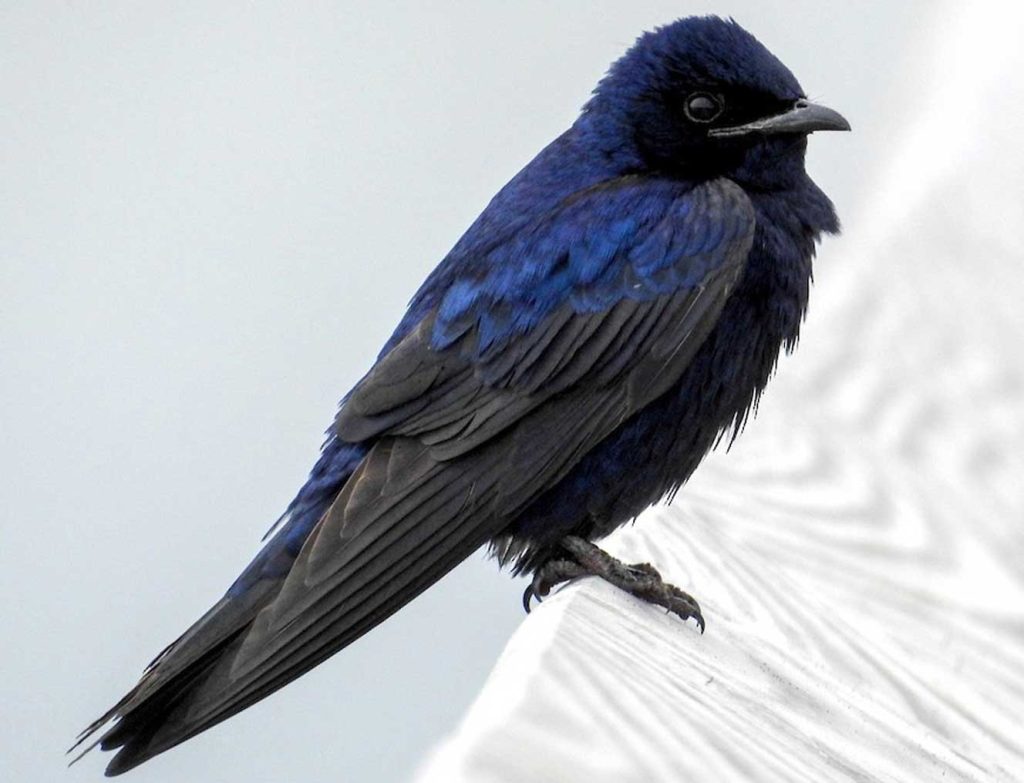
Source: ebird.org
The purple martin is a species of passerine bird found in the swallow family Hirundinidae. It is the largest swallow species in North America, and its size is quite striking. Despite its name, however, the purple martin is not actually purple.
Instead, its plumage is a combination of black and steel blue, giving it a unique and beautiful appearance. The purple martin is a migratory species and can be found across much of the United States and Canada.
It is a sociable bird, often seen in large flocks, and is an important part of many ecosystems. It feeds on a variety of small insects, which it catches on the wing.
The purple martin is a popular bird for backyard birders, and its presence can be an attractive addition to any garden.
| Kingdom | Animalia |
| Phylum | Chordata |
| Class | Aves |
| Order | Passeriformes |
| Family | Hirundinidae |
| Genus | Progne |
| Species | P. subis |
13. Tree Swallow
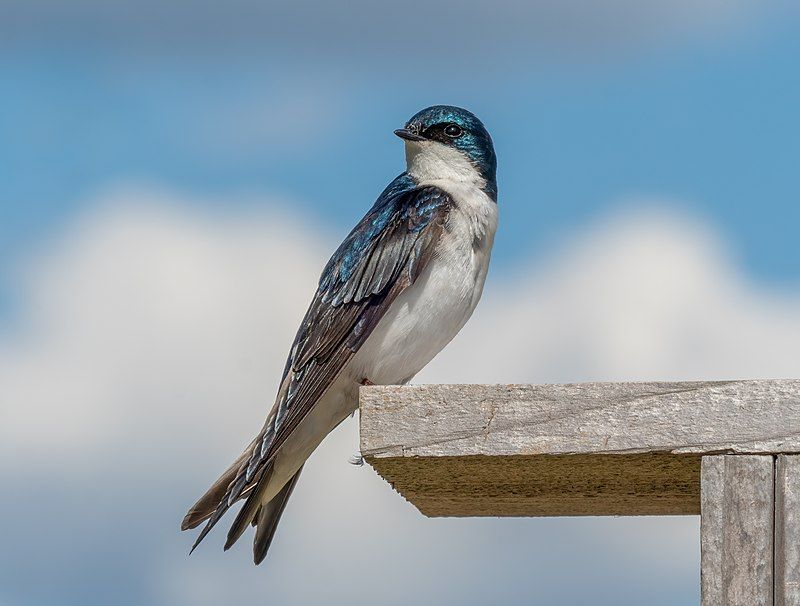
The tree swallow is a species of migratory bird belonging to the Hirundinidae family. It is found in the Americas, with its initial description being done in 1807 by French ornithologist Louis Vieillot, who referred to it as Hirundo bicolor.
Since then, it has been moved to its current genus, Tachycineta, to which its exact phylogenetic placement is still debated. The tree swallow is a small bird, typically measuring between five and seven inches in length and weighing anywhere between 0.5 and 0.6 ounces.
It has a slender body and long, pointed wings, and exhibits a distinctive bicolored pattern, with its upperparts being mostly a glossy blue-black and its underparts normally white. It has a short, forked tail and a small, pointed bill.
Tree swallows have a wide range, which stretches from Alaska in the north to northern South America in the south.
During the summer months, they tend to inhabit open grasslands and meadows, as well as marshes, lakes, and rivers, where they can feed on the abundance of insects found there.
During the winter, they migrate to warmer climes, such as Central America and the Caribbean. The tree swallow is an omnivorous bird, meaning that it feeds on both plant and animal matter.
Its diet is mainly composed of flying insects, such as beetles, moths, and dragonflies, as well as spiders, earthworms, and small fruits. Tree swallows build their nests in tree hollows and crevices, and lay between five and seven eggs at a time.
The female is mainly responsible for incubating the eggs and raising the chicks.
| Kingdom | Animalia |
| Phylum | Chordata |
| Class | Aves |
| Order | Passeriformes |
| Family | Hirundinidae |
| Genus | Tachycineta |
| Species | T. bicolor |
14. House Finch
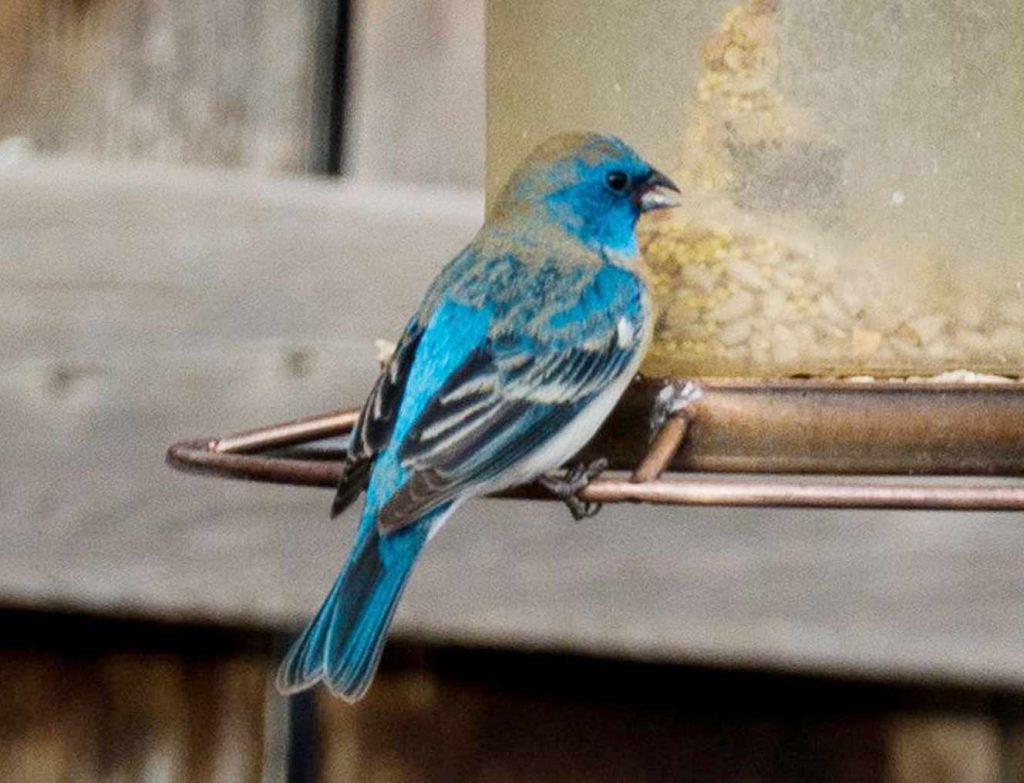
Source: reddit.com
The house finch is a species of bird that belongs to the Fringillidae family. It originates from western North America but has since been introduced to the eastern half of the continent and Hawaii.
This species of finch, alongside two other American rosefinches, is classified under the genus Haemorhous. House finches are known for their bright red head and throat coloration, which makes them easily identifiable. They are also quite social birds, often seen in flocks.
Their diet consists mainly of seeds, buds, fruits, and insects. In addition, they will also take advantage of bird feeders in residential areas. House finches are a very adaptable species and can be found in a variety of habitats, including suburbs, farmlands, and woodlands.
They are also one of the most common birds in North America, making them a familiar sight in many parts of the continent.
| Kingdom | Animalia |
| Phylum | Chordata |
| Class | Aves |
| Order | Passeriformes |
| Family | Fringillidae |
| Genus | Haemorhous |
| Species | H. mexicanus |
15. Belted Kingfisher
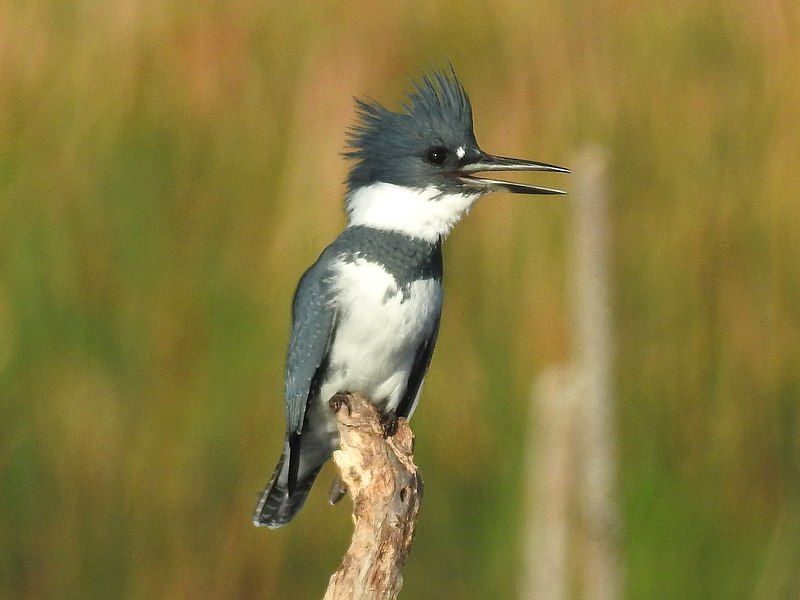
The Belted Kingfisher is a large, distinctive bird that is native to North America. This species belongs to the family of water kingfishers, Alcedinidae.
This family was once considered to be a single unit, but recent research suggests that this should be divided into three subfamilies.
Each of these subfamilies contains different species of kingfishers, based on their physical characteristics, such as size, plumage color, and bill shape.
For example, the Belted Kingfisher belongs to the subfamily of “River Kingfishers”, which includes all of the species that are found near rivers and streams.
The other two subfamilies are “Tree Kingfishers” and “Water Kingfishers”, which include all the species found in freshwater wetlands.
By dividing the family into these three subfamilies, researchers are able to better understand the evolution and distribution of different species of kingfishers, as well as their relationship to other birds.
| Kingdom | Animalia |
| Phylum | Chordata |
| Class | Aves |
| Order | Coraciiformes |
| Family | Alcedinidae |
| Genus | Megaceryle |
| Species | M. alcyon |
16. American Robin
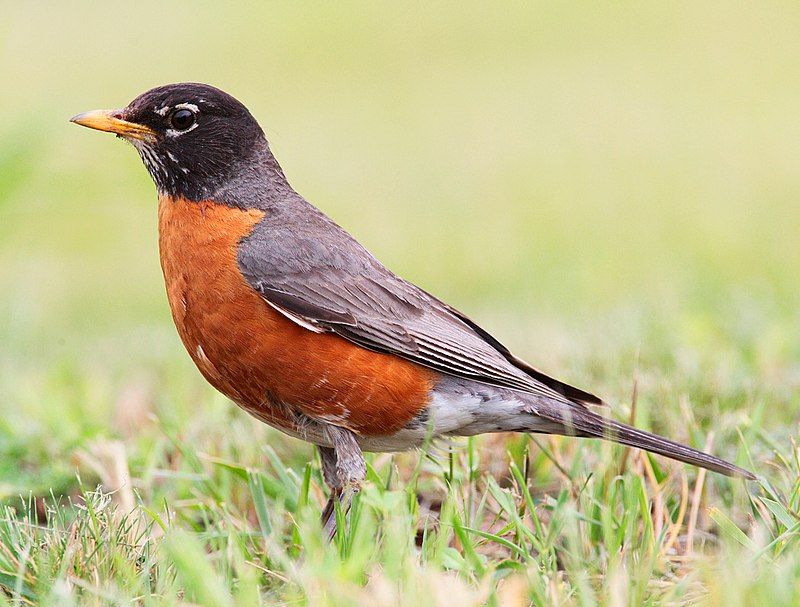
The American robin is a migratory bird that is part of the true thrush genus and the wider thrush family, known as Turdidae. It is named after its European counterpart due to its similarity in appearance, specifically the reddish-orange breast.
However, although they may look alike, the two species are not closely related, with the European robin belonging to the Old World flycatcher family. The American robin is found across North America and is a common sight in backyards, parks, and gardens.
It is a medium-sized bird with a rounded body, dark gray-brown back, and a bright reddish-orange breast. The American robin is an omnivore, eating both insects and fruits.
It is an important species for controlling insect populations, and its presence is a sign of a healthy environment.
| Kingdom | Animalia |
| Phylum | Chordata |
| Class | Aves |
| Order | Passeriformes |
| Family | Turdidae |
| Genus | Turdus |
| Species | T. migratorius |
17. Northern Parula
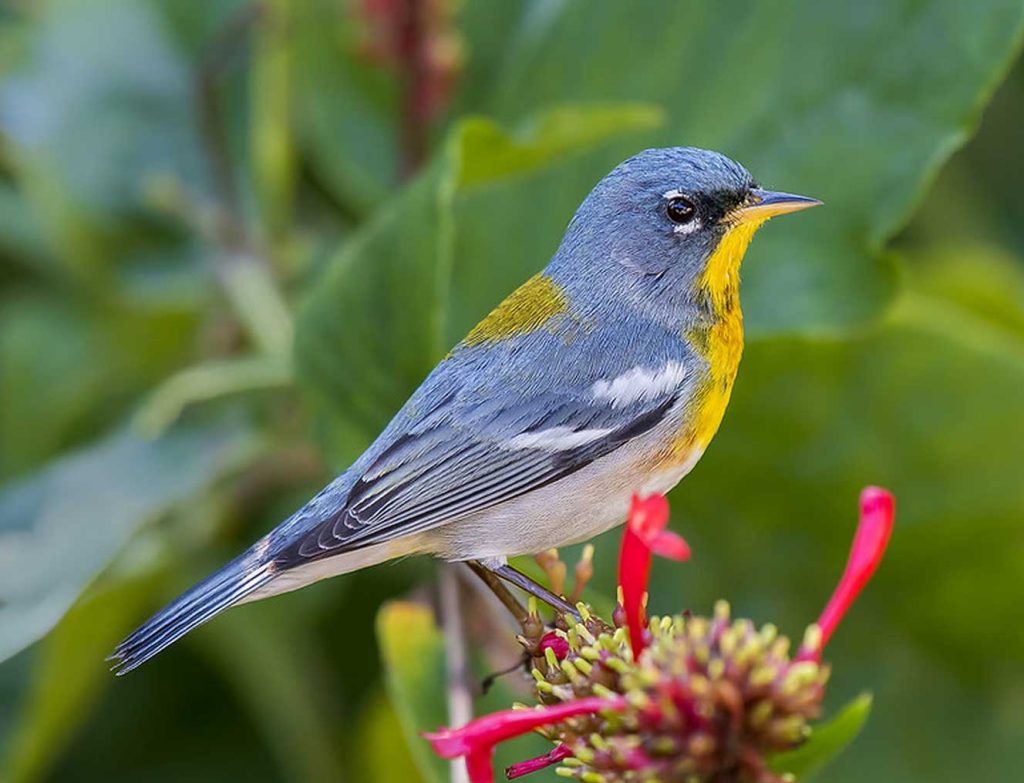
Source: dibird.com
The northern parula is a species of New World warbler, belonging to the family of birds known as Parulidae. It is a small bird, typically measuring around 12 cm in length and weighing between 10 and 20 g.
It is mainly found in the eastern parts of North America, ranging from southern Canada down to Florida.
During the breeding season, from late May to mid-August, the northern parula can be found in a range of habitats, including deciduous and coniferous forests, shrubby edges, and meadows.
It builds its nests in trees and shrubs, usually near the ground, and the female lays between three and five eggs. The northern parula feeds mainly on insects and spiders, which it catches while foraging in thick vegetation. It also sometimes takes fruit and nectar.
The northern parula is listed as a species of least concern by the International Union for Conservation of Nature, as its population is not considered to be declining in size.
| Kingdom | Animalia |
| Phylum | Chordata |
| Class | Aves |
| Order | Passeriformes |
| Family | Parulidae |
| Genus | Setophaga |
| Species | S. Americana |
18. Tufted Titmouse
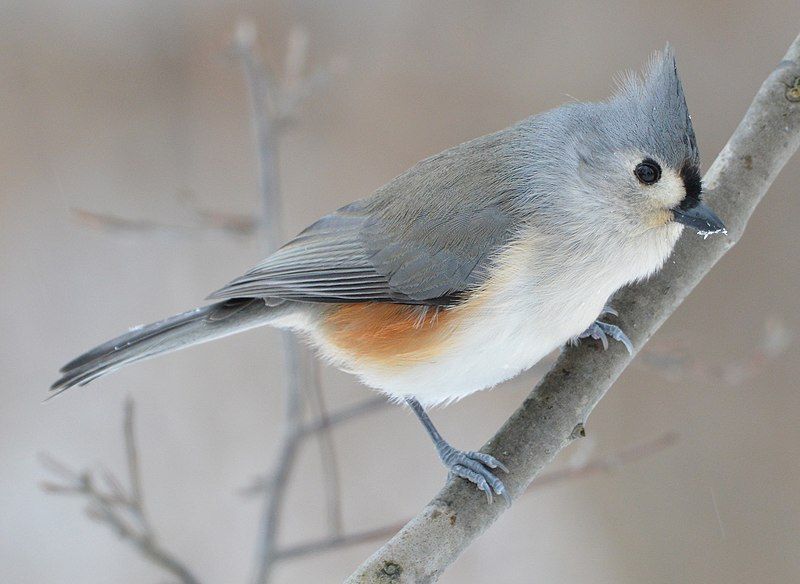
The tufted titmouse is a small songbird native to North America and is a member of the tit and chickadee family. This species of titmouse is found throughout the United States, ranging from Canada to the Gulf Coast. It is generally gray in color with a white belly.
It also has a prominent crest on its head and a long tail. The tufted titmouse is known for its distinctive call, which is a repeated “tee-tee-tee.”The black-crested titmouse is a distinct species of titmouse found from central and southern Texas southward.
This species is similar in appearance to the tufted titmouse, but it has a black crest and a more brownish-gray coloration. It was once considered a subspecies of the tufted titmouse but is now recognized as a separate species (Baeolophus atricristatus).
The black-crested titmouse is also known for its distinctive call, which is a repeated “chick-a-dee-dee-dee”.
| Kingdom | Animalia |
| Phylum | Chordata |
| Class | Aves |
| Order | Passeriformes |
| Family | Paridae |
| Genus | Baeolophus |
| Species | B. bicolor |
19. Gray Catbird
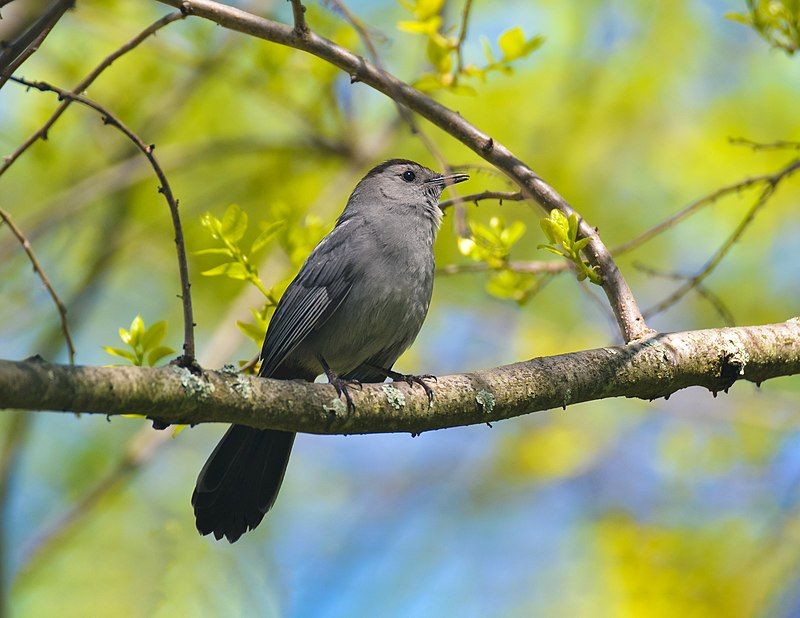
The gray catbird also spelled grey catbird, is a unique species of bird native to North America and Central America. It is a medium-sized bird belonging to the mimid family, which includes thrashers, mockingbirds, and New World catbirds.
This species is the only member of the “catbird” genus Dumetella. The gray catbird is easily identifiable by its slate-gray plumage and a black cap on its head. Its wings and tail are darker gray and its wings have white patches on them.
Its bill is short and stout, and its legs are long and thin. It has a distinctive call which is a mix of whistles, mews, and chatters. The gray catbird is a ground-dwelling species that prefers to feed on the ground.
It eats insects, berries, and fruits, and sometimes visits bird feeders for snacks. It builds its nest in low shrubs or trees and is a solitary nester. The gray catbird is a migratory species, but its movements are not well understood.
Some populations migrate south for the winter, while others stay put in their breeding range. Overall, the gray catbird is an interesting species that is easily recognizable in its native range. Its unique coloration and call make it a standout among other birds.
| Kingdom | Animalia |
| Phylum | Chordata |
| Class | Aves |
| Order | Passeriformes |
| Family | Mimidae |
| Genus | Dumetella |
| Species | D. carolinensis |
20. Cerulean Warbler
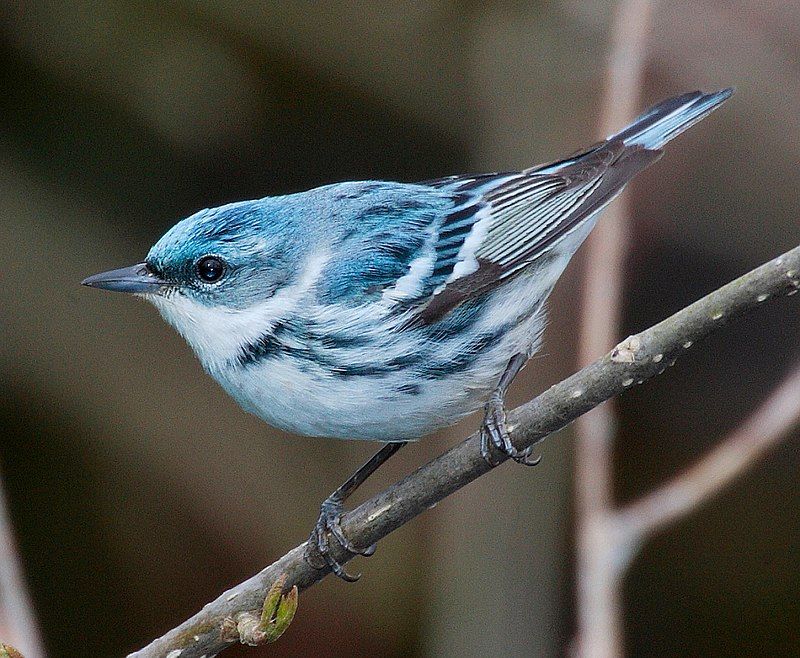
The cerulean warbler is a small songbird belonging to the family Parulidae. It is a long-distance migrant, meaning it migrates over long distances, breeding in the hardwood forests of eastern North America.
During the non-breeding season, the cerulean warbler migrates to the eastern slope of the Andes in South America, where it prefers subtropical forests.
This species is a great example of a long-distance migrator, having adapted to a wide range of environmental conditions and habitats in order to maximize its chances of survival.
The cerulean warbler is an important species in the ecosystems of both North America and South America, as its presence contributes to the health of the local bird populations.
The cerulean warbler is also an important species ecologically, as its presence helps to keep insect populations in check, which in turn helps to keep the environment healthy.
| Kingdom | Animalia |
| Phylum | Chordata |
| Class | Aves |
| Order | Passeriformes |
| Family | Parulidae |
| Genus | Setophaga |
| Species | S. cerulea |
21. Red-Winged Blackbird
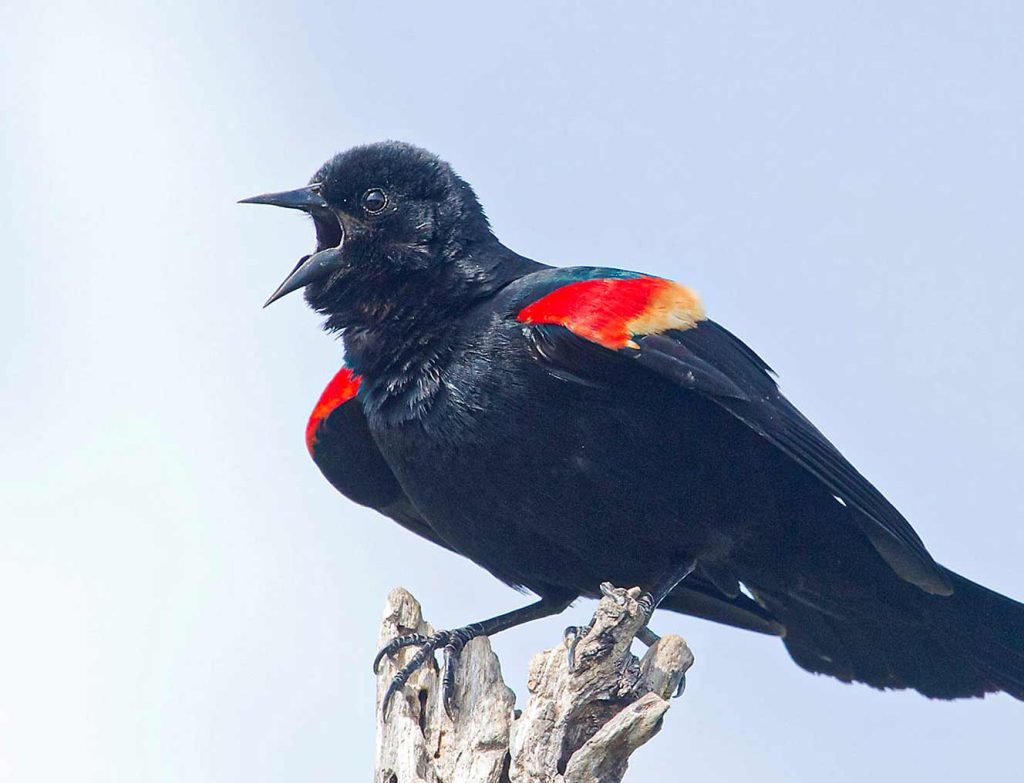
Source: vtecostudies.org
The red-winged blackbird is a type of songbird belonging to the family of Icteridae. It is widespread throughout North America and Central America.
It can be found across a variety of habitats, including wetlands, grasslands, and agricultural fields, where it feeds on grains, insects, and more. The red-winged blackbird is a medium-sized bird with black feathers, highlighted with red or yellow patches on its wings and tail.
Its distinctive call is a loud, piercing “konk-la-ree”.
Males display dramatic courtship rituals, which include singing, dancing, and flaring of their wings to show off their bright red and yellow patches. The red-winged blackbird is an important species in the ecosystem, playing an important role in controlling insect populations.
Its nesting habits also benefit other species, providing useful nesting materials and food for a variety of other birds. Unfortunately, the red-winged blackbird is facing a number of threats, including habitat loss, pesticides, and climate change.
As such, conservation efforts are being made to protect these birds and their habitats. These include protected areas, habitat restoration, and education programs to raise awareness of the importance of this species.
| Kingdom | Animalia |
| Phylum | Chordata |
| Class | Aves |
| Order | Passeriformes |
| Family | Icteridae |
| Genus | Agelaius |
| Species | A. phoeniceus |
22. Double-Crested Cormorant
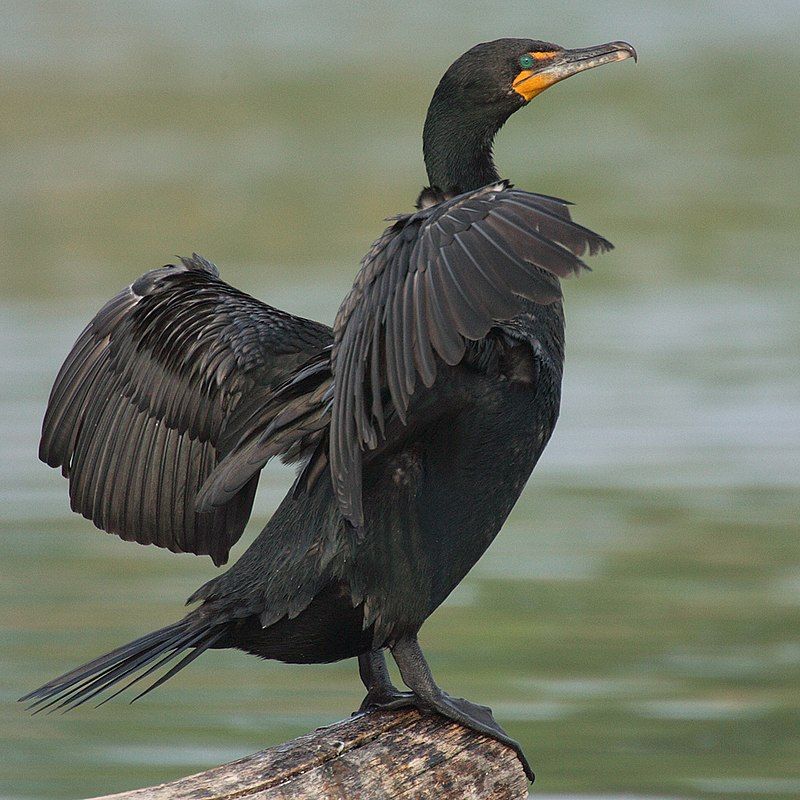
The double-crested cormorant is a species of water bird that belongs to the cormorant family. It is a widely distributed bird found in North America, ranging from Alaska all the way to Florida and Mexico.
It is commonly seen near rivers and lakes as well as in coastal areas. The double-crested cormorant is a large bird, with a wingspan of up to 4 feet. It has a black or brownish-black body, a yellow throat patch, and a white cheek patch.
The double-crested cormorant gets its name from the two tufts of feathers on its head. It has webbed feet and a hooked bill. The double-crested cormorant is a strong swimmer and an excellent diver. It dives for its food, which includes fish, crustaceans, and mollusks.
It is also known to eat amphibians, small birds, and eggs. The double-crested cormorant breeds in colonies, and they build their nests on cliffs or in trees near water. The female lays three to five eggs and both parents help incubate them.
The chicks are fed by regurgitating food brought up from the water. The double-crested cormorant is an important part of the food chain, and its population is monitored by birdwatchers and conservationists. It is a species of least concern on the IUCN Red List.
| Kingdom | Animalia |
| Phylum | Chordata |
| Class | Aves |
| Order | Suliformes |
| Family | Phalacrocoracidae |
| Genus | Nannopterum |
| Species | N. auritum |
23. Brown-Headed Cowbird
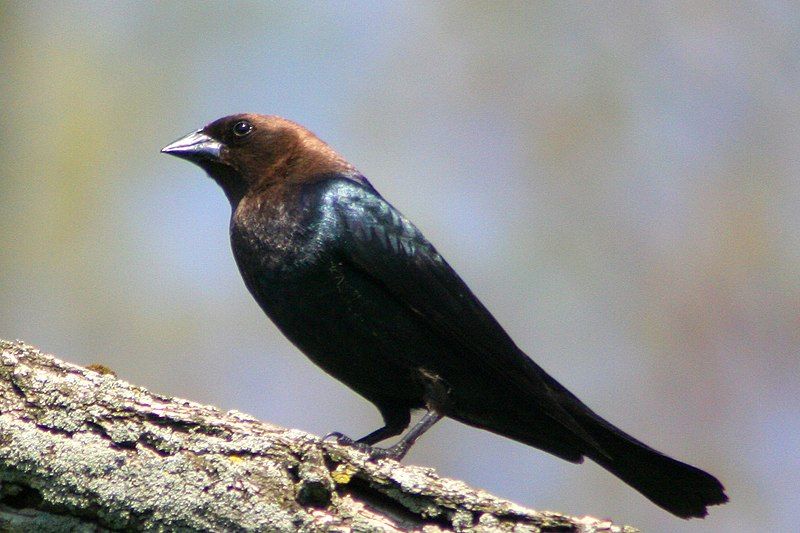
The brown-headed cowbird is a species of icterid, a group of passerine birds. It is native to temperate and subtropical North America and is a permanent resident in the southern parts of its range.
This bird species is small in size and is an obligate brood parasite, meaning it relies on other bird species to incubate and raise its young.
Northern birds of this species migrate to the southern parts of the United States and Mexico in winter and then return to their summer habitat around March or April. This species is commonly found in open grasslands, agricultural areas, and suburban parks.
It feeds on a variety of insects and grains and sometimes visits bird feeders. It is also known for its loud calls and song. Brown-headed cowbirds are important to the ecology of North America due to their role in dispersing seeds and providing food for other species.
| Kingdom | Animalia |
| Phylum | Chordata |
| Class | Aves |
| Order | Passeriformes |
| Family | Icteridae |
| Genus | Molothrus |
| Species | M. ater |
24. Painted Bunting
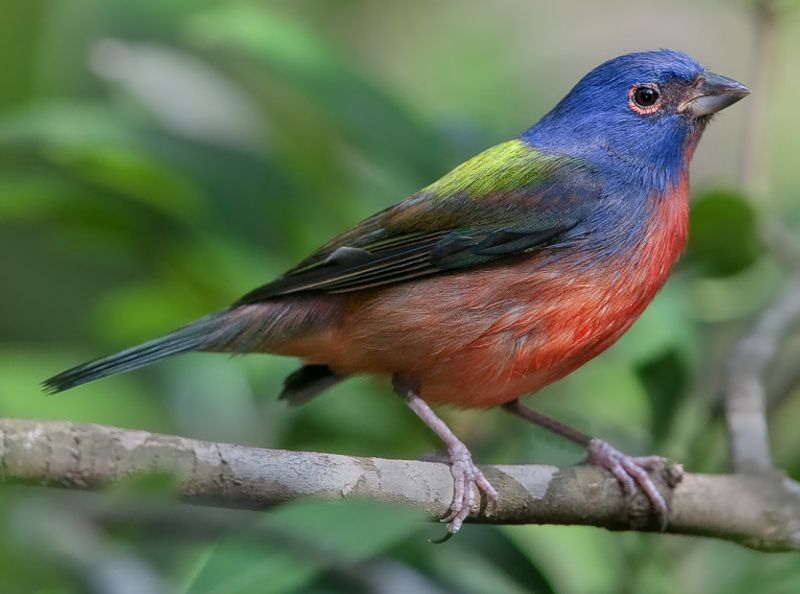
The painted bunting is a species of bird in the Cardinalidae family, native to North America. This bird is known for its brightly colored plumage, which is only present in males in their second year of life.
In the first year, the only way to distinguish males from females is through careful inspection. The male bunting is covered in a range of colors, including red, purple, green, and blue, making it an especially vibrant and colorful bird.
Additionally, its long tail feathers and distinctive beak shape are helpful in identifying it in the wild. Despite its beauty, the painted bunting is listed as a species of conservation concern due to habitat loss and is considered a threatened species in some states.
Conservation efforts are underway to protect and restore its habitats, in order to secure the future of this stunning bird.
| Kingdom | Animalia |
| Phylum | Chordata |
| Class | Aves |
| Order | Passeriformes |
| Family | Cardinalidae |
| Genus | Passerina |
| Species | P. Ciris |
25. American Purple Gallinule
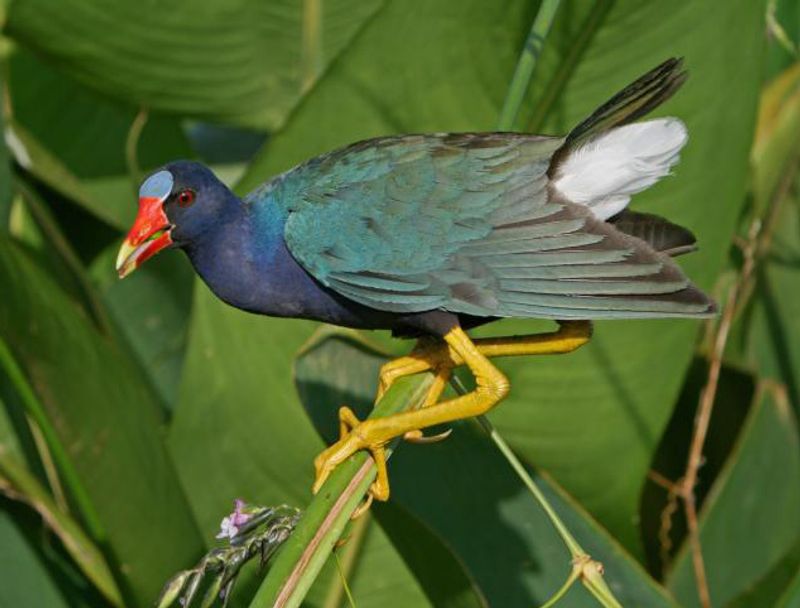
The purple gallinule is a type of swamphen that belongs to the genus Porphyrio. This species is a part of the order Gruiformes, which is made up of birds that are similar to cranes, such as rails and crakes.
The purple gallinule is classified into the family Rallidae, which consists of various types of rails. It is also known by its local name, the yellow-legged gallinule. The purple gallinule is a colorful bird with purple and green feathers.
Its distinct yellow legs are a characteristic feature that helps to identify this species. This species is found in wetland areas, where it feeds on aquatic vegetation, insects, and other invertebrates. It usually nests in dense vegetation near the water’s edge.
The purple gallinule is an important species for wetland habitats, providing food for predators and other animals. However, its population is declining due to human activities such as wetland drainage, pollution, and hunting.
To help protect this species, it is necessary to conserve its habitats and limit human activities in wetland areas.
| Kingdom | Animalia |
| Phylum | Chordata |
| Class | Aves |
| Order | Gruiformes |
| Family | Rallidae |
| Genus | Porphyrio |
| Species | P. martinicus |
26. Old World Flycatchers
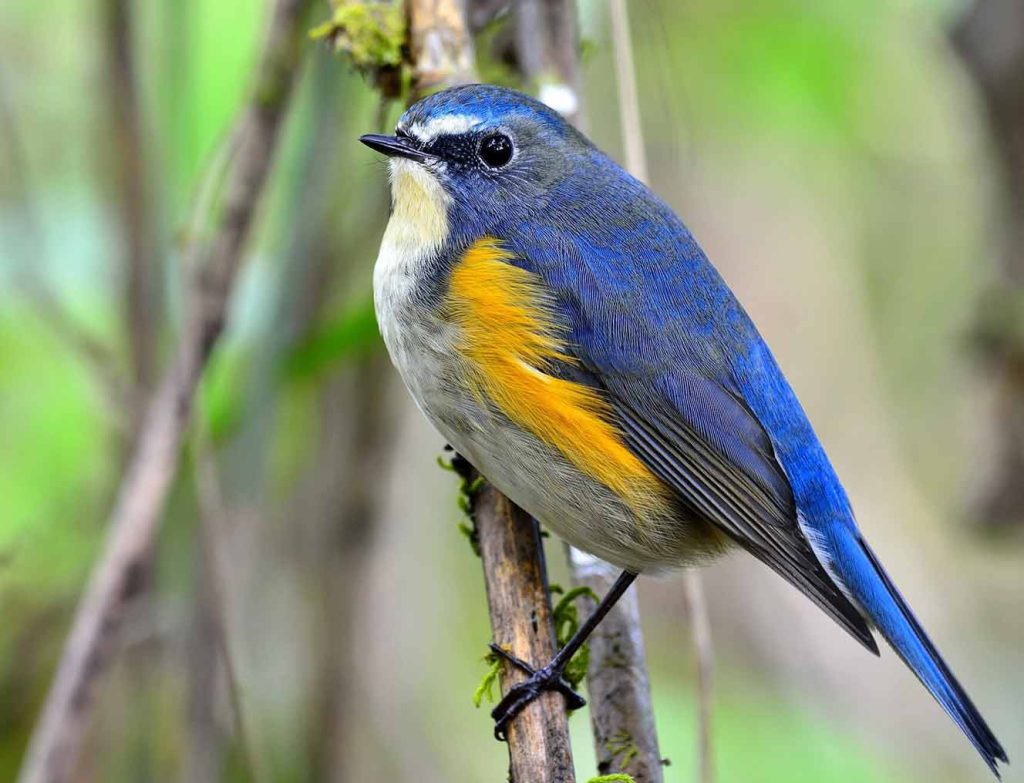
The Old World flycatchers are a family of small passerine birds, called Muscicapidae, that are found mainly in the Old World. However, there are two species, the bluethroat, and northern wheatear, which have been seen as vagrants in North America.
These birds are usually small, with most species measuring between 6–15 cm in length. They typically feed on insects, which they catch in mid-air, but some species have a more varied diet including fruit and nectar.
They are a diverse group of birds, with over two hundred species in the family. They are found in a variety of habitats, from deserts to tropical forests, and some species migrate long distances.
| Kingdom | Animalia |
| Phylum | Chordata |
| Class | Aves |
| Order | Passeriformes |
| Family | Muscicapidae |
27. Sulids
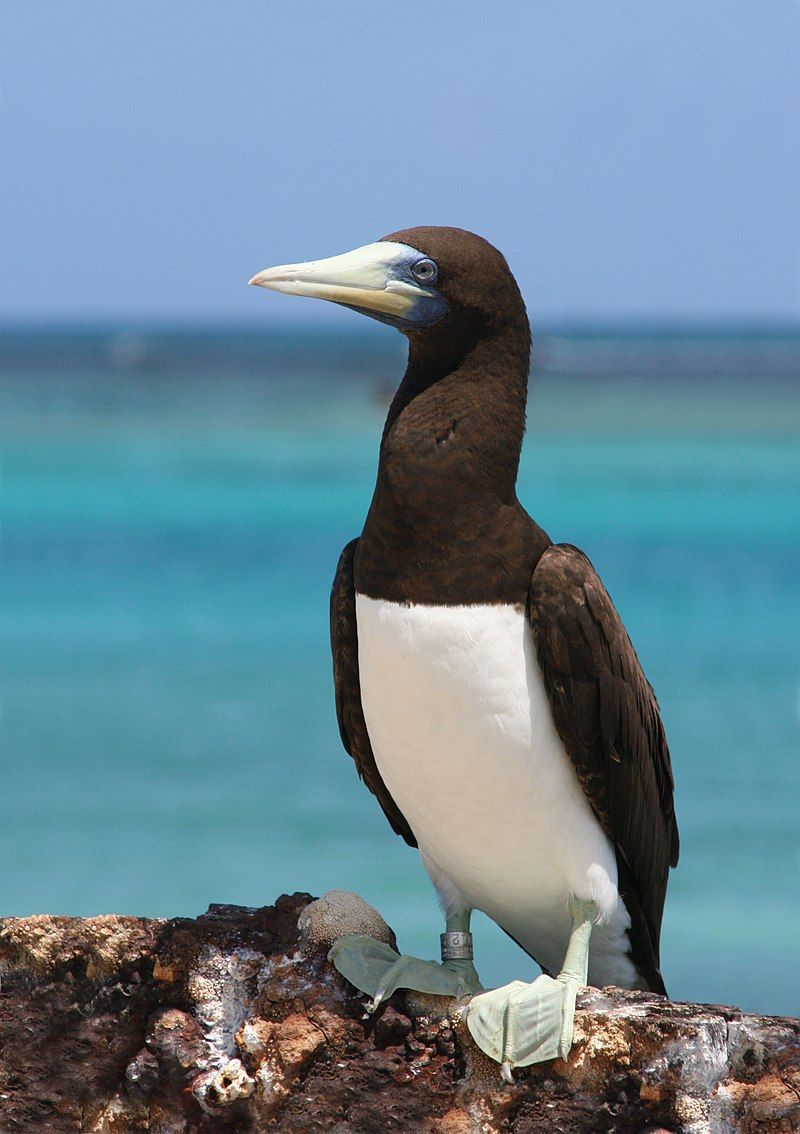
The bird family Sulidae is made up of gannets and boobies, which are collectively referred to as solids. These birds are medium-sized and usually found near coastal areas.
They hunt for their prey by diving into the water from a height and feeding on fish and other aquatic animals. There are 10 different species of birds in this family, and in the past, they were all classified under the same genus, Sula.
However, modern sources have begun to recognize the differences between the species and place them in their own genera. These birds are usually found in large colonies and are known for their loud calls and bright colors.
They play an important role in the ocean’s delicate ecosystem, helping to maintain balance and diversity.
| Kingdom | Animalia |
| Phylum | Chordata |
| Class | Aves |
| Order | Suliformes |
| Family | Sulidae |
28. Gnatcatcher
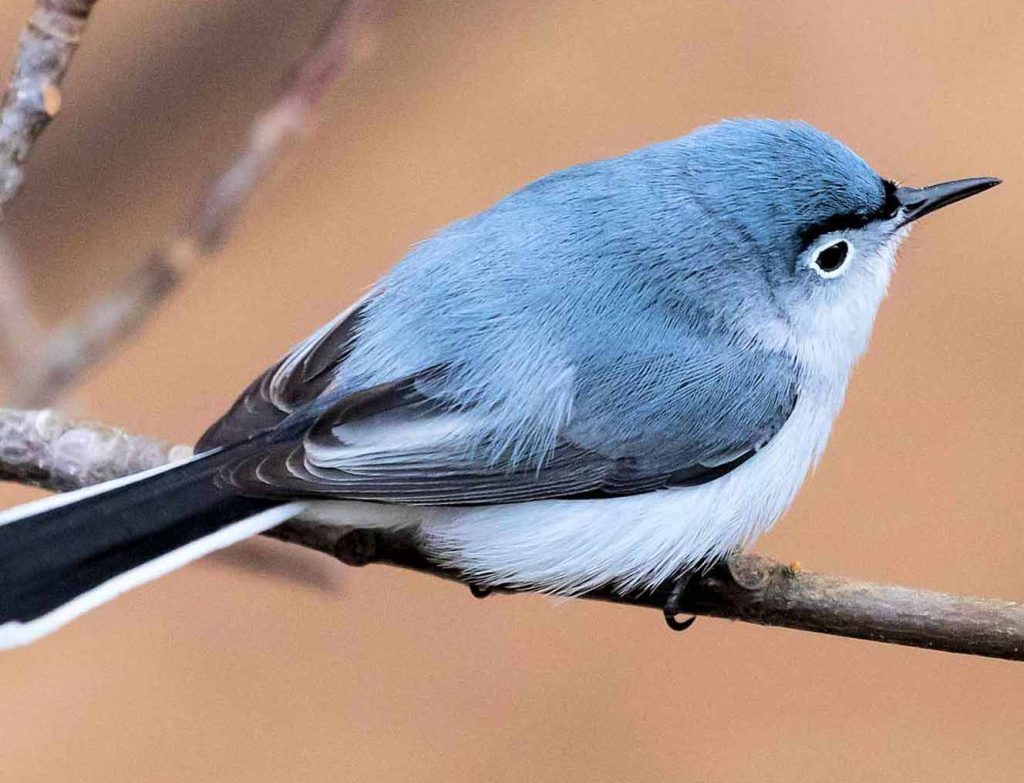
Gnatcatchers are a family of small passerine birds found throughout North and South America. They are part of the Polioptilidae family, and there are 21 species in total.
The majority of these birds tend to be found in tropical and subtropical climates, and they usually stay in the same area year-round. However, there is one exception to this – the blue-grey gnatcatcher of the United States and southern Canada.
This particular species migrates southwards during the winter months. The gnatcatchers are generally small birds, with a length ranging from 4-7 inches. They are usually grey, blue, or brown in color. They are known for their thin, pointed beaks and long tails.
They feed mostly on insects and larvae and are important for controlling insect populations. Gnatcatchers are also important for their role in pollination and seed dispersal.
| Kingdom | Animalia |
| Phylum | Chordata |
| Class | Aves |
| Order | Passeriformes |
| Family | Polioptilidae |
Conclusion
Blue birds are a beloved sight in New Jersey and have been a symbol of hope and beauty for many generations. They can be found in many areas of the state, especially in woods, parklands, and other natural areas.
Blue birds are an important part of the state’s ecology, and they continue to be a beloved species in New Jersey.